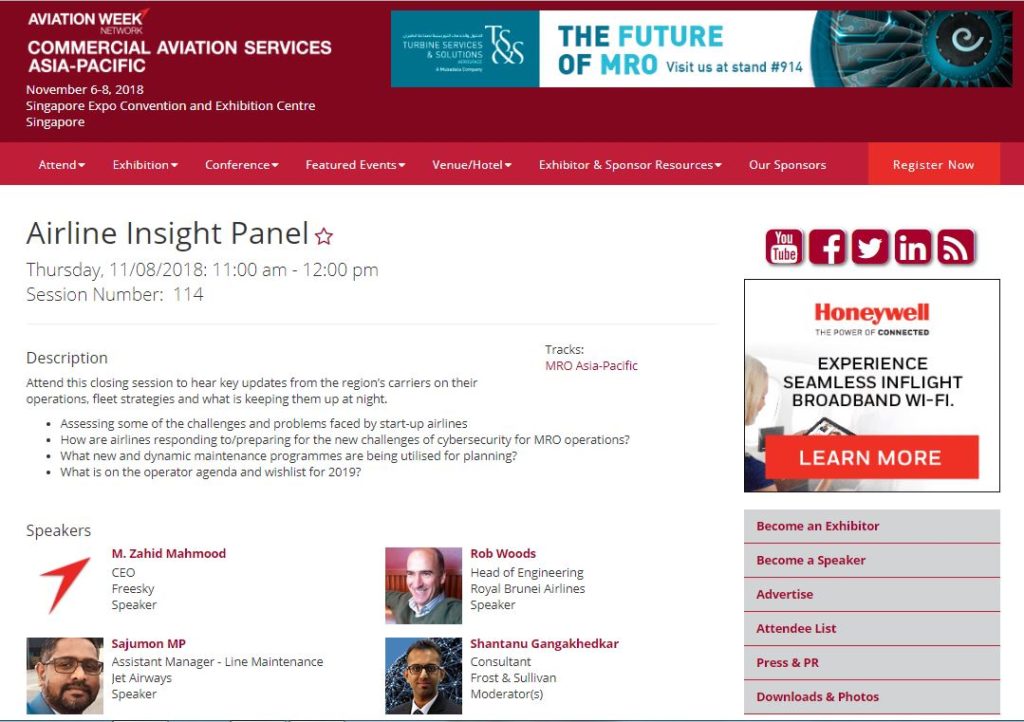Mr. Sajumon Maledathu Pankajakshan @empeesaju (Aircraft Maintenance Management, Jet Airways), AerospaceMBA Alumni 2017 (Batch 1 TBS-IIMB cohort) has a very intense schedule in November & December 2018!
Firstly he gave an interview in the frame of 9th International Conference “Innovative Aircraft Seating & Refurbishment” that takes place in Hamburg (Germany) from 4 to 6th of December 2018.
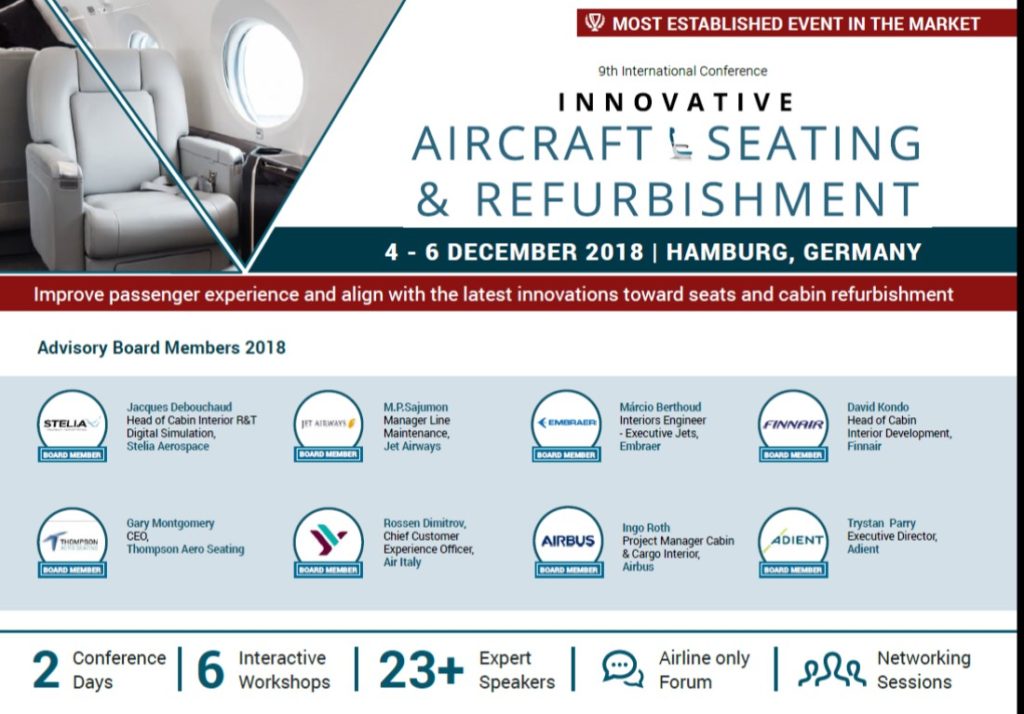
Here is the content of the interview:
India is expected to become the world’s largest domestic civil aviation market in the next 10 to 15 years. What does it mean for Indian aviation in terms of aircraft seating market? Which challenges and opportunities will it trigger for airlines?
Industry forecasts predict India to be the third largest aviation market by 2025 and is expected to cater 478 Million passengers by 2036. It is an opportunity for all airlines including Jet A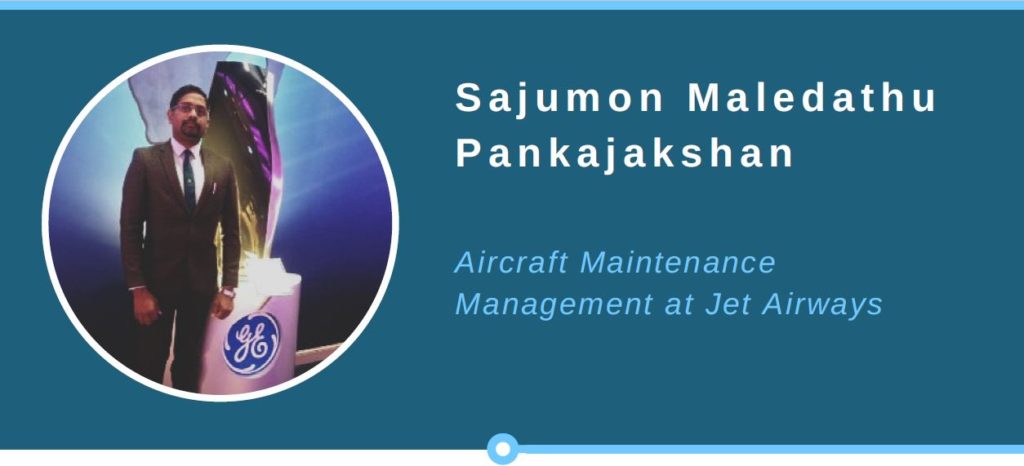 irways yet is a big challenge too. Opportunity is in the huge potential of growth which is envisaged over the years, as well as in contributing to India’s growth story in a bigger way. For a quick calculation, let us look at the order backlog of Airbus and Boeing.
irways yet is a big challenge too. Opportunity is in the huge potential of growth which is envisaged over the years, as well as in contributing to India’s growth story in a bigger way. For a quick calculation, let us look at the order backlog of Airbus and Boeing.
Together they have a global backlog of 13309 aircrafts. 24% of these backlogs are within the ASIPAC region, out of which 25% lies within India (6% of the global backlog) which translates to 796 airplanes. For simplicity, I would assume that all orders are for single aisle with approximate 156 seating capacity. With a shipset of 156seats costing at least $350,000, this would translate into $278 Million upcoming expenditure for the airlines in India. It is pertinent to note that, in reality the seats are a mix of business and economy, and hence the figures would be on the higher side than this ball park figure. In Aviation, costs are kept close to the chest and going forward, to keep costs to minimum I anticipate, airlines backward integrating and entering the seating industry. However, while looking at the projected growth of Indian Aviation, we should also be looking at the skill gap in the industry. In my view, the industry and academia has to come together to bridge this gap and harness the full potential of the growth story. To embrace the projected growth, we have to evolve as a robust Aviation ecosystem.
BYOD and embedded IFE are still an ongoing discussion. In short, how do you see the future of seats regarding IFE/BYOD?
Consumer behavior is evolving. We are in an on-demand economy. Its beyond doubt, that BYOD and embedded IFE systems are changing the definition of passenger inflight experience. This definitely shifts the focus away from the not so ergonomic economy class seating and not so comfortable shoulder contacts with the next passenger, if one happens to be sitting in a middle seat.
Off-course, the seat manufacturers have taken a note of this and there are inspiring innovations happening in this front, like a wider middle seat, or a ‘side slip’ seat or a reconfigurable cabin concept as in flex seat. Going forward, I also foresee, lot of technical innovations in the pipeline to merge with the “gadget ecosystem” -if I may say so, of the BYOD passenger.
Jet Airways seems to combine both IFE/BYOD since 2016, can you tell us more about it? Do you know about your passenger experience regarding that matter?
Jet Airways has been offering IFE systems on its aircraft and off late we have been providing JetScreen-Wifi Streaming services on select aircraft. BYOD Concept benefits for the airline, because of the smaller number of hardware which are put on board, associated weight reduction, fuel savings and also not to forget the maintenance man-hour savings too. Once the regulatory clearance is through for the internet connection on board, passengers could expect a seamless connectivity on their devices.
This is a paradigm shift from the earlier days of IFE wherein a passenger had to be confined to the limited media content available on board. I look at it this way. Assuming I am a die-hard fan of Jack Ryan or Good Wife series available on Amazon prime or Netflix, in future when I am travelling, I would be delighted to watch the next episode of the program on board exactly from the point where I had last watched it lying on a couch at home. Future looks exciting.
How will the advent of “intelligent cabins” change the game toward embedded IFE?
There is definitely a strong traction towards intelligent cabins. German Federal Ministry
of Economic Affairs and Energy has granted 3.9 Million Euros for a project named iCabin.
With highly accomplished team working behind, which includes- Bühler Motor, Diehl, Jeppesen, Zodiac Aerospace, Boeing, KID Systeme and Etihad Airways Engineering, iCabin is something worth looking forward to, wherein each cabin equipment (Seats/ Galley/ Lavatories etc.) interfaces with a network.
In my opinion, embedded IFE is in a transition stage, with more airlines moving towards BYOD for the reasons well known. However, assuming intelligent cabin is paired with embedded IFE, at least for the start, continuous remote monitoring of the IFE serviceability would become a possibility, which in turn would reduce the down time to rectify defects. From the passenger’s perspective, he/she could expect a customized welcome message on the screen to begin with and all the audio/ video contents as per their previous usage algorithm detected by the server. For the inflight executive, it would be a dream come true, wherein she could monitor the passenger seat belt status remotely as well as control and lock the overhead bins through an app. This is quite interesting to think about. This is a market which would evolve harnessing the limitless potential of IOTA – Internet of Things for Aerospace.
Preventive maintenance toward seat and cabin is arising. Which MRO benefits do you see and what do you expect in the near future?
From an MRO perspective, a connected cabin architecture would pave the way for continuous monitoring of the functionality of each of the equipment and alert the maintenance crew before the flight lands about a potential failure. Preventive Maintenance team could in turn be prepared with the spares to rectify the anomaly during the limited time.
Also, it could continuously monitor the parameters ex: seat cushion thickness and alert the maintenance crew when the wear and tear reach an alert level. Any maintenance person’s night mare is detecting pen markings on tray table or seat covers. On a lighter note, I believe the day is not far off, when the tray table or the seat cover detects by itself that the passenger is making pen markings on them and raise an alarm.
As the seat technology is evolving, going forward, I also feel technical crew would require more customized and elaborate training to handle the ‘not so mechanical’ aircraft seating. Industry has to come forward and collaborate with the institutions, to bridge the widening skill gap between demand and supply.
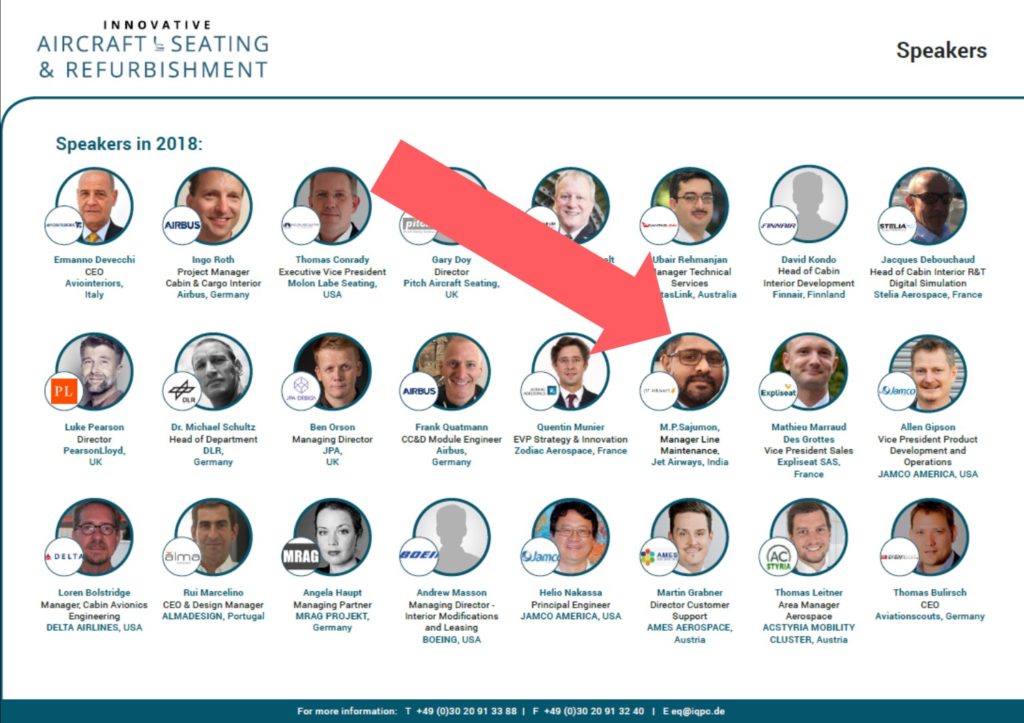
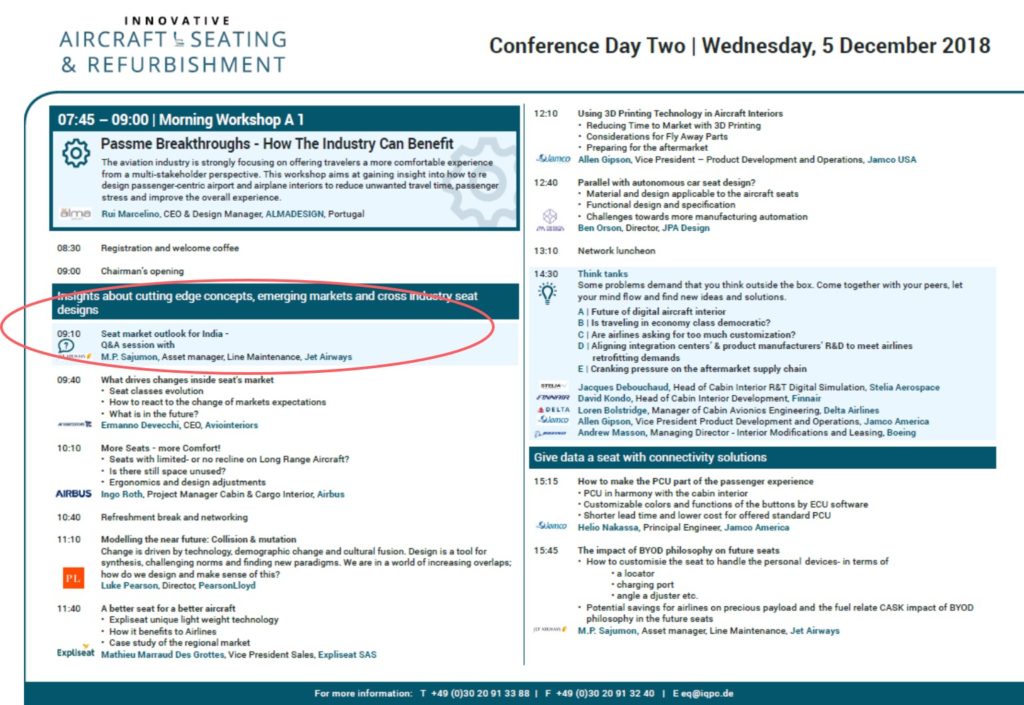 He’s as well taking part to a “Airline Insight Panel” at MRO Commercial Aviation Services AviationWeek Network on Thursday 8th of November from 11 am to 12 pm (session 114), Singapore Expo Convention and Exhibition Centre Singapore.
He’s as well taking part to a “Airline Insight Panel” at MRO Commercial Aviation Services AviationWeek Network on Thursday 8th of November from 11 am to 12 pm (session 114), Singapore Expo Convention and Exhibition Centre Singapore.

